Discussed in this post: 17 books (Tales of Love; Three Characters; Attachment and Loss, Vol. II; Lustmord; Health Communism; Homo Juridicus; A World of Becoming; Call Them By Their True Names; The Lying Lives of Adults; A General Theory of Oblivion; The Dinner; The President; After Midnight; The Flame; To Urania; Powers of Congress; and Josephine Baker); 8 movies (Triangle of Sadness; Pearl; Don’t Worry Darling; Moloch; Pleasure; The Menu; M3GAN; and Aftersun); and 4 documentary (FIFA Uncovered; Brainwashed; What Happened in Vegas; and Pepsi: Where’s My Jet?).
Books
1. Kristeva, Julia. Tales of Love (1987 [1983]).
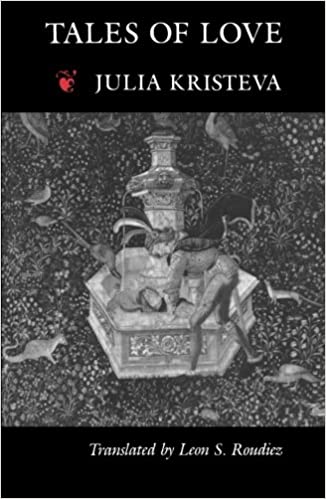
My previous post (see here: https://danoudshoorn.com/2023/on-love-grief-loss-the-un-making-of-selves/) was a sustained engagement with this book and the thoughts that it prompted, so I won’t add much more here. I randomly found it in a book sale at a local thrift store and, lo and behold, it proved to be exactly the right book at the right time for me. Kristeva has long intimidated me due to her engagement with complex concepts and her assumption that the reader can follow along. However, I felt sufficiently proficient in the domain of Freudian and Lacanian psychoanalysis to dive into her work. I’m glad that I did. It was an excellent prompt for creative thinking and self-reflection. I will read more Kristeva soon.
2. Bollas, Christopher. Three Characters: Narcissist, Borderline, Manic Depressive (2021).

Christopher Bollas offers three quick overviews of three mental health disorders that have risen to prominence in the last many years. He writing is informed by decades of experience, of research, of engaging on collaborative conversations with other practitioners on these subjects, and yet it remains easily accessible. I found his chapters on narcissism and borderline to be especially interesting. I found his quick read on “the manic depressive” (a term he uses deliberately instead of the “bipolar” label that has become more prominent lately). In that area, I found Darian Leader’s Strictly Bipolar to be much for interesting. However, his chapter on narcissism went well with what I was reading from Kristeva on that subject—although his analysis of narcissism has more to do with the pathologies we associate with it, thereby complimented Kristeva’s work on narcissism and love.
3. Bowlby, John. Attachment and Loss Volume II. Separation: Anxiety and Anger (1973).
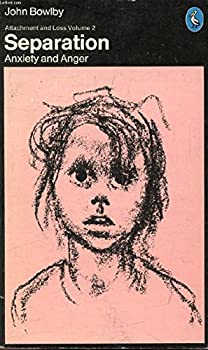
John Bowlby and Mary Ainsworth’s attachment theory work really set the trajectory for further considerations on parenting and had a lasting impact on professionals who work with kids and their adult caregivers. Their work has so suffused the work of anyone thinking about human relationships with other humans, that I wasn’t sure how much more I would glean from going back and reading this primary text. But I did go back and read it and I’m really glad I did. As with lasting works, there is so much more richness in this text than the broad outlines and truisms that have been passed down. Great research and reflections on separation, fear, attachment, anxiety, and different ways of being together with others. You can skim the case studies if you want and still get a ton from a quick read through the text. Recommended for any with children or for anyone who had a childhood.
4. Tatar, Maria. Lustmord: Sexual Murder in Weimar Germany (1995).

Over the last several years, there has been a very public resurgence of various new and old forms of fascism and sneeringly celebratory misogyny. As I have been trying to understand these things, and the ways in which they are intimately connected to each other, I have been struck by parallels to Weimar Germany. In this regard, I am indebted to Klaus Theweleit and his truly outstanding two-volume work, Male Fantasies. Maria Tatar, a renowned scholar in her own right, especially in the domain of folk and fairy tales, builds on Theweleit’s work and examines the prominent role of “Lustmord” (sex-murder) in German art in the Weimar Republic. She explores various themes related to masculinity, power, attraction, revulsion, sex, violence, and, especially, himpathy (Kate Manne’s term in Down Girl for public sympathy shown to men or boys who are charged with engaging in acts of sexual violence against women and girls). I believe there’s a strong case to be made, and Tatar does spend some time making the connections, that this form of misogyny persists today (I wrote a poem about this awhile ago: see here: https://danoudshoorn.com/2020/with-soft-hands/) and Tatar, like Theweleit, does a fine job of exploring how that context is produced, encouraged, and what kind of men it creates and appeals to. Thus, for example, we see what Jane Ward in The Tragedy of Heterosexuality refers to as “the misogyny paradox”: the fact that boys and men are taught to both hate women and desire them. When men then act violently, is it any wonder that other men rush to exonerate them—and encourage women to be good girls and do the same? Recommended reading, if you can stomach the content (and, if not, just read the books mentioned by Manne and Ward).
5. Adler-Bolton, Beatrice and Artie Vierkant. Health Communism (2022).

Health communision, Beatrice Adler-Bolton and Artie Vierkant explain, means all care for all people. It means breaking with capitalism’s focus on illness as that which prevents bodies from working and developing a more holistic understanding of what it means to care, to cure, and to be healthy or sick. If we are to arrive at a state of all care for all people, Adler-Bolton and Vierkant go on to emphasize, we must centre our politics on surplus populations—those who are considered waste and who capitalism engages within a process of extractive abandonment. Surplus people, those considered too much of a drain on society, too fundamentally sick or deviant to be able to contribute meaningfully to the economy, are made the foci of economies that still extract profit from them (the non-profit industrial complex, the whole system of policing, academic guilds that focus on researching the poor, and so on). Thus (and this is my reframing of Adler-Bolton and Vierkant’s argument), instead of a binary between the “deserving” and “undeserving” poor, we now have a split between the marketizable and non-marketizable poor. The former are abandoned to die, the latter become the focus of all kinds of technocratic governance, regimes of truth, job for the middleclass, and so on. It’s a great argument and puts into words some things I have been struggling to express. Further, to focus Adler-Bolton and Vierkant bring to the struggles of the Socialist Patients’ Collective (SPK) in West Germany in the 1970s is absolutely fascinating. It sounds like the SPK’s approach to a non-hierarchical doctor-patient dialectic is a precursor to the model I have been developed with some friends about a dialectic of shared expertise between frontline workers and people with lived and living experience of abandonment. A short and easily readable work, this one is definitely recommended.
6. Supiot, Alain. Homo Juridicus: On the Anthropological Function of the Law (2017 [2007]).
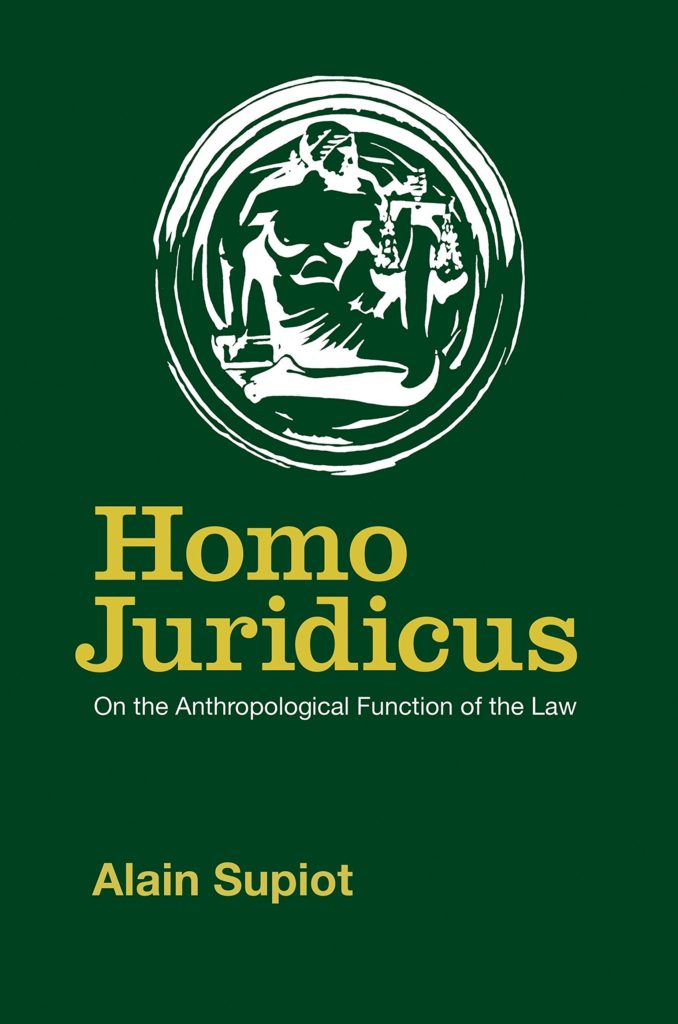
The problem with most jurists, is not only that they know the law but, if they are also of a professorial nature, they also, at some fundamental level, believe in the law. And always lurking behind the law is a particular vision of order (although, as Proudhon famously asserted, “anarchy means order,” from which the anarchist symbol of an “A” inside an “O” derives). This seeps through in Supiot’s work which, although providing stringent criticisms of neoliberalism’s contractualization of law (an absolutely central element of contemporary governance at all levels of society), he still ends up finding ways to reaffirm things like heteronormativity and transantagonism as key elements of a lawful society. I couldn’t help but be reminded of the work of John Milbank and the ultimately conservative project of Radical Orthodoxy (are jurists de facto conservatives?). Strong criticisms of capitalism, especially in its current global iteration, engagement with so-called radical theory… and then an affirmation of a romanticized vision of the past (for Milbank, perhaps, 18th century Christian Europe, for Supiot, in contrast, 18th century Liberal Europe). So, while there are definitely elements of Supiot’s analysis I will use in my own work, I’m not too interested in further pursuing broader commitments.
7. Connolly, William E. A World of Becoming (2011).

Over against the certitude and objectivity and Newtonian mechanics of the mainstream big names of Occidental philosophy, there’s a more fluid, disparate, rootless and rhizomatic trajectory fraught with quantum mechanics that runs from Spinoza, through Nietzsche, Whitehead, and Deleuze. Connolly fits within this trajectory but, thank goodness, writes more legibly than a number of his peers. (Or I’m just getting more accustomed to how people in this stream like to write? Probably both.)
8. Solnit, Rebecca. Call Them by Their True Names: American Crises (and Essays) (2018).
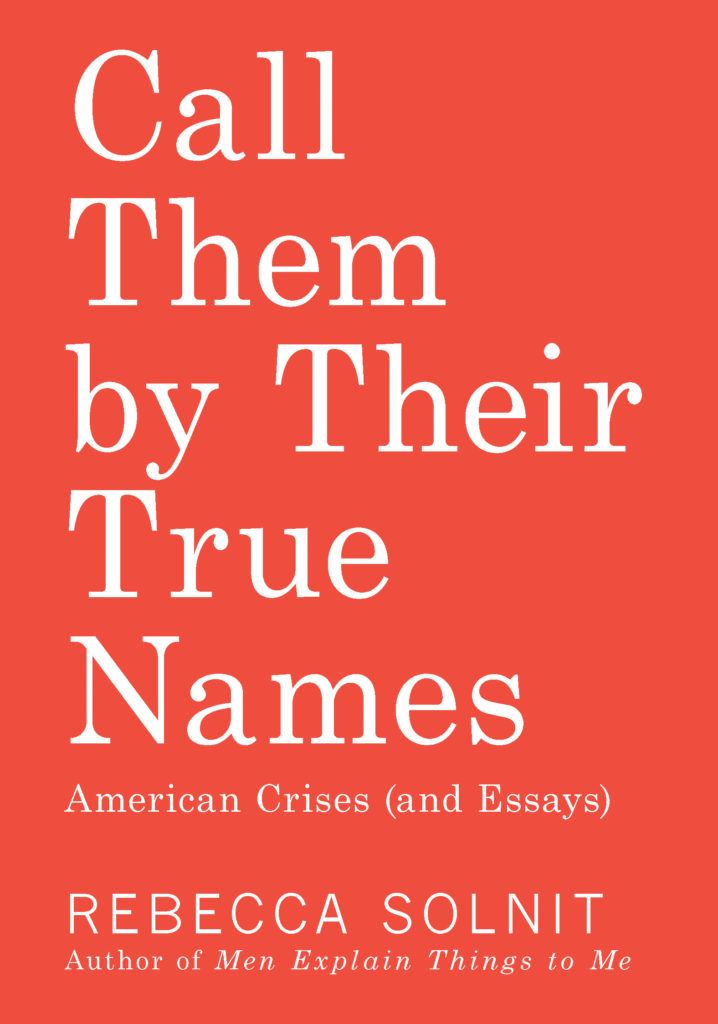
I wanted to like this collection of short essays by Rebecca Solnit. I got nervous when she was praising Hillary Clinton in the beginning and I got nauseous when she drew on Martha Nussbaum’s appallingly bad work on anger when criticizing the caricature that she creates of the “radical Left” (which was reminiscent of Christopher Hedges’s thoroughly refuted paternalism in relation to that topic). So, by the time she drew on Erica Chenoweth’s work on nonviolence (work that was sponsored by the American Military), I was resigned to disappointment. Solnit has done some great work in the past. But, dang, there are some real limits to what bougie White Liberalism offers us. And, I think, the more White Liberalism feels itself thrown into crisis—as occurred with the rise of Donald Trump, which is a major theme in these essays—the more those pearl-clutching, law and order limits are brought into the light.
9. Ferrante, Elena. The Lying Life of Adults (2020 [2019]).

After reading Elena Ferrante’s Neapolitan Quartet—which convinced me that she is one of the best writers of fiction to ever write fiction—I have been slowly working through her other novels. The Lying Life of Adults was the first novel she published after completing My Brilliant Friend (and, unbeknownst to me until writing this review, an adaptation of The Lying Life… was released on Netflix this month). It’s an excellent work of fiction and every level. As a piece of writing the sentences ebb and flow and swell and recede like an orchestral piece circling a central theme and slowly building to a grand crescendo. As a story about a teenage girl transitioning from childhood to adulthood it’s a marvelous study of the complexities of humans being together with other humans being together with others. As with Ferrante’s other works, it’s also scalpel-sharp in its ability to cut into what life is like for girls and women living in a world created by and for boy-boys and man-boys. A real delight to read.
10. Agualusa, José Eduardo. A General Theory of Oblivion (2016 [2013]).
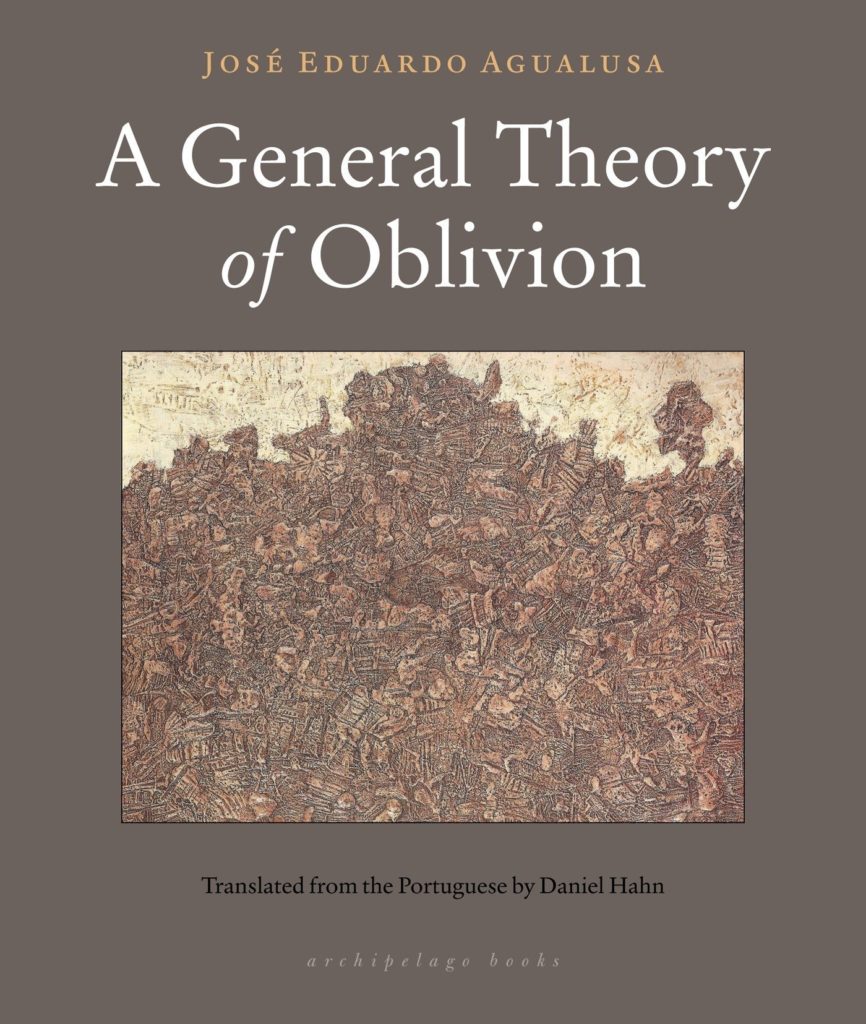
Agualusa is a talented writer whose voice, the voices of many other writers coming from the two-thirds world as it struggles to liberate itself from colonialism, hints of magic and dreams. After reading The Society of Reluctant Dreamers, I knew I wanted to read more of his work. A General Theory of Oblivion, the tale of a Portuguese woman who barricades herself in her apartment on the eve of Angolan independence and who remains there for years, was… good… but it didn’t live up to my expectations. A quick and hynoptic, although ultimately not very memorable, read.
11. Koch, Herman. The Dinner (2013 [2009]).

As I have dug into the White supremacist history of the city in which I live—a history that spans from the earliest days of colonization, to the days when Black slaves escaping to Canadian-occupied territories were driven back south and cross-burnings by the KKK can be seen in archives of the local paper, to resurgence of neo-Nazis on the streets and a race scientist in the tenured halls of the local academy, to more recent outbreaks of PEGIDA, Proud Boys, Freedom Ralliers, and Christo-fascists—I have been struck by the presence of people who come from Central or Eastern European fascist backgrounds. The WWII-era fascism of Italy, Germany, and Spain are well-known, but the fascist forces that were operative, and happily performing genocide, in Hungary, Slovakia, Serbia, Croatia, Poland, and Ukraine, are much less frequently remembered. Yet, here in London, I have found people who use the slogans and symbols of the Croatian Ustaše, the Serbian Ljotićevci and the Hlinka Guard from Slovakia. As I was thinking about this, it made me reconsider how we think about people how flee from wars. Often, we see them as victims of aggressors—those trying to escape genocide. And, in many cases, that it was they are (like the 907 German Jews Canada turned away in 1939 when they sought asylum here, sending them back to death and devastation in Europe; in fact, between 1933 and 1945 only 5000 European Jewish refugees were permitted to enter Canada because, as one Canadian official said, “none is too many”). However, it is also the war criminals and war profiteers, men of wealth and violence, we may have a vested interest in fleeing their homelands once things turn against them. Clearly some of these men and their loved ones found a home in and around London and, as the world has turned towards a more celebratory embrace of fascism once again, the grandchildren of these men are beginning to show their true colours.
I was thinking about this while reading Herman Koch’s The Dinner—the story of a seemingly well-to-do Dutch family where everything is not at all what it appears to be on the surface—because my own Dutch heritage and (admittedly very limited) interactions with other Dutch Canadians, makes me wonder if something is rotten in the state of the Dutch Diaspora. The Netherlands, of course, having grown rich as the founders of the African slave trade, while simultaneously finding ways to merge piety with opulence, has its own history that cuts to the heart of darkness. Something lurks beneath their enlightened approach to public transportation, their less restrictive laws around sex and drugs, and their commitment to home rights and social welfare. This lurking something continually bursts through in Dutch literature—from this work by Koch to works by Harry Mulisch, Willem Frederik Hermans, and Hafid Bouazza—and it was exponentially elevated, deepened, and twisted, by the national trauma that was the Second World War. Many of the Dutch in Southwestern Ontario came here after the War (my own family included). Canadians, in our glorious retelling of our history, imagined this as the flight of those who had been devastated to the land of those who liberated them, but surely some of those who were fleeing were fleeing the consequences of what they themselves had done to survive or perhaps even profit off the war. Then victims and victimizers all gathered together in their Dutch Reformed Churches, continued to be pious and at least middle-class if not wealthier, in their newly constituted enclaves of White, heteronormative, patriarchal Christianity. But, like the couples in Koch’s story, such an impeccably prepared dinner, such a precise presentation, such an elaborate display, cannot finally or entirely cover over what lies beneath. The truth will out. Or it will not. But the price paid to keep it in will be paid in blood.
Good book. Recommended reading.
12. Asturias, Miguel Ángel. The President (2018 [1946]).
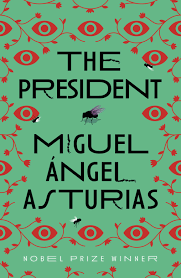
Last year I met a rad microbiologist from Guatemala and, realizing that I knew nothing but nothing about Guatemalan literature (the only text I’ve read from that part of the world is the Popol Vuh), I asked for her recommendations and she suggested Men of Maize by Asturias. Unable to find a copy of that book, I picked up The President. It’s an excellent work of political and magical realism as developed by other Latin American authors like Casares, Márquez, Llosa, Amado and, I suppose, Borges (if you want to include him in this category… I tend to think of his work as somewhat different and more “post modern” in the way in which his texts are self-deconstructing). In fact, with the exceptions of Casares and Borges (both Argentinians who were publishing at the same time or slight before Asturias), Asturias’s work comes before the work of the other mentioned authors and paved the way for them. I very much enjoyed the novel, its broad cast of characters, its movement between dream and waking sequences, and the glimpse it provides into (an)other world(s).
13. Keun, Irmgard. After Midnight (2020 [1937]).
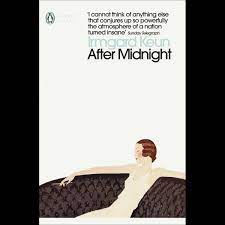
Four years after Hitler became Chancellor of Germany and two years before the outbreak of the Second World War, Irmgard Keun wrote this short novel given the reader a prescient glimpse into the normalized devastation that had already settled upon the German people but which had not yet come to its full fruition. Keun shows the ways in which the Nazis inflamed, valorized, and encouraged the petty resentments, malices, hatreds, jealousies, and outraged sense of self-righteousness of the bourgeoisie. Yet Keun’s insights into all areas of human interaction are so cutting that they inevitably contain a great deal of humour. Humour, it should be noted, that does not make false witnesses of us all (see Roberto Benigni’s Osar-winning Life is Beautiful [1998] for an example of that), but humour that is present because it, too, is part of life, even in the midst of devastation. It’s not the focus. But, in the midst of it all, it’s there. Anyone who has spent time with people who are the targets of systemic violence and oppression—from sex workers to support groups for Queer Christian or Muslim kids—knows about the importance of humour to survival. Keun weaves together something wonderful here. That said, the relevance of Keun’s book isn’t simply the insight she gives us into the German middle-class in the early days of Nazism. More than that, and this is partially why I keep reading works that focus on the racial capitalism and toxic masculinity of Weimar Germany, Keun gives us insight into the misogynistic, White supremacist neoliberalism that rules our time. Recommended reading.
14. Cohen, Leonard. The Flame: Poems and Selections from Notebooks (2018).

Leonard Cohen spent half a century cultivating a certain kind of image—the dapper but sensual gentleman poet-musician, so refined, so seductive. He’s a bit of a star and a bit of a Zen monk and a bit of the devil and a bit weary of it all. Those who are enamoured by men like this are enamoured. There are moments when his music takes me there, but I’ve never been one of his groupies. I decided to finally read some of his poems because I found this collection in bargain bin at a thrift store. I paid $2.25 and, after reading it through, that seemed a fair price.
15. Brodsky, Joseph. To Urania (1992 [1977, 1987]).
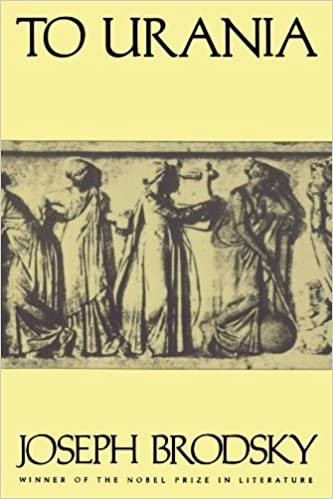
Winner of the Nobel Prize for Booooooring Poetry, I found this collection to be booooooring.
16. Fulton, Alice. Powers of Congress: Poems (1990).
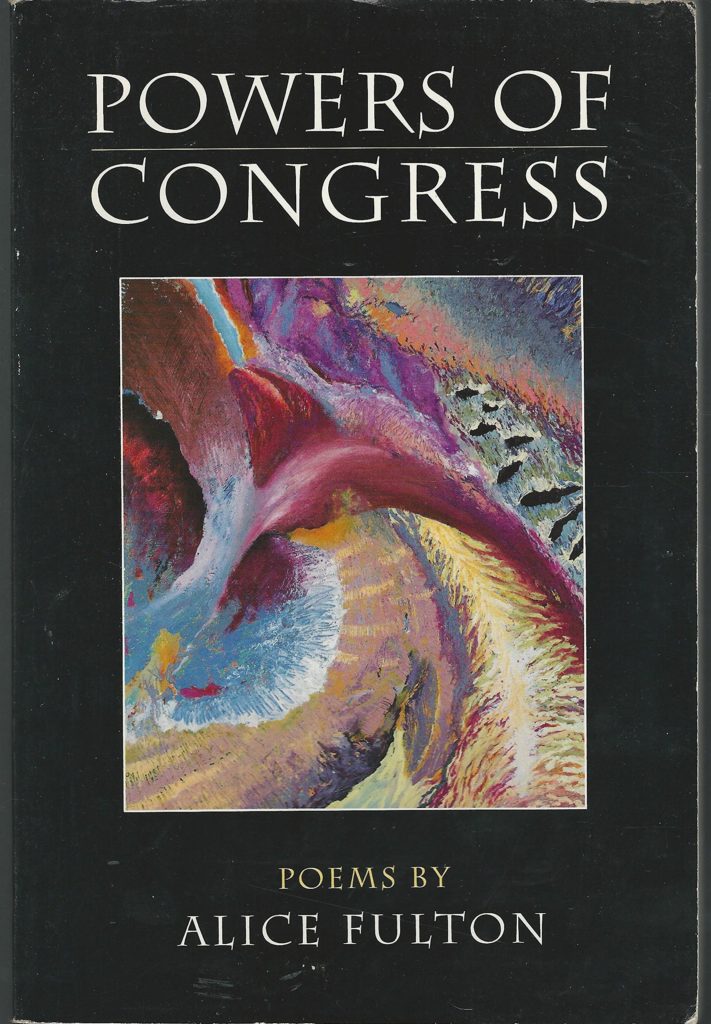
Karen Barad’s book, Meeting the Universe Halfway (the best book I’ve read, to date, on the topic of what is reality and all that, like, is this chair I’m sitting on even real and, um, quantum mechanics mixed with philosophy and stuff), introduced me to Alice Fulton’s poetry. This is the second collection of have read of Fulton’s since then and It’s solid. I dog-eared many more page corners than usual so that I would be able to quickly find the poems I want to go back and read. Fulton’s mixture of simplicity, science, awe, and disillusionment is attractive and her mastery of her craft is evident. I will be looking for more of her work.
17. Catel & Bocquet. Josephine Baker (2017).

I knew next to nothing about Josephine Baker prior to reading this excellent graphic novel depiction of her life (which, for the curious reader, contains a detailed timeline of her life and short biographies of the other characters who appear in the book at the end). In this work of obvious love and admiration for Baker, Catel and Bocquet move us quickly through a life that is full of pleasure, play, care, and triumph. Born in the murderously violent White supremacist city of St. Louis, Missouri in 1906, Baker is able to find her way to freedom, fame, and fortune, all while supporting the civil rights movement, joining the French resistance and, on one occasions, possibly saving Fidel Castro’s life. Remarkable!
Catel and Bocquet—both White Europeans—present this as a journey from triumph-to-triumph, but there is a subtext of possible orientalism, fetishization, exploitation and even misogynoir that runs through the text but which is never fully explored or addressed head-on by authors. This is not to say that I find their presentation of Baker to be implausible—perhaps she really did experience everything in the way they suggest—and, in making these remarks, I have no interest in contributing to any kind of “slut shaming” or in suggesting that using beauty to get what one wants in life is somehow wrong (get that money, yo!), but I do feel that everyone around Baker gets off a little easy. I would have liked to have this topic examined in more detail.
Regardless, this was a thoroughly enjoyable graphic novel and, in my opinion, provides a great example of why I continue to go back to this form of literary art.
Movies
1. Östlund, Ruben. Triangle of Sadness (2022).
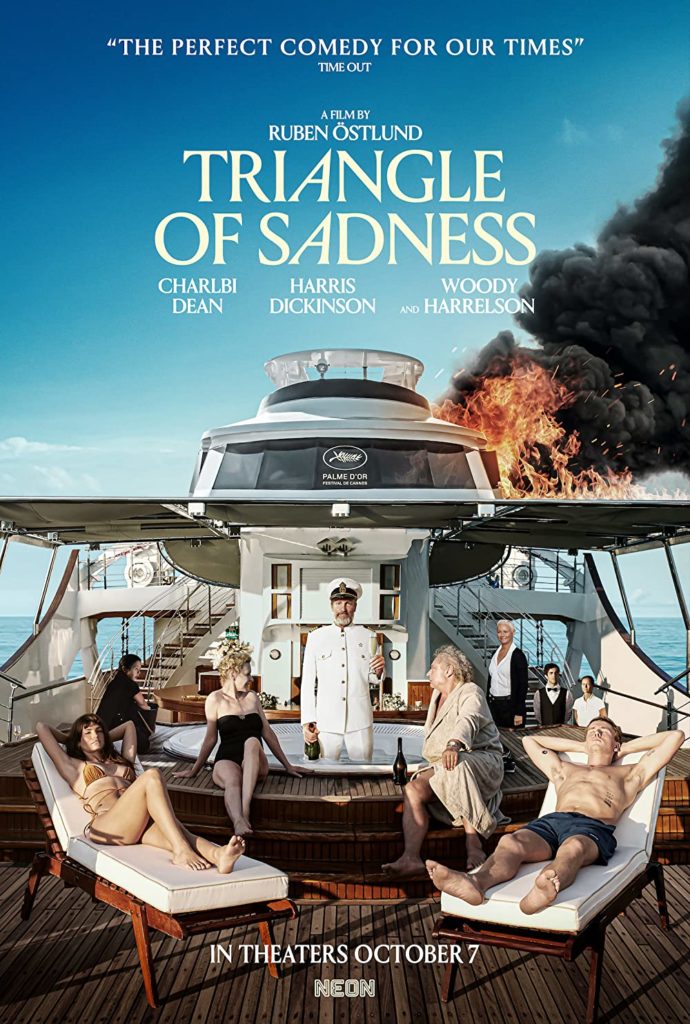
Ruben Östlund makes great movies. I first fell in love with his examination of lives that are equal parts profound, hilarious, devastated, and absolutely cringe-worthy when I watched Force Majeure (2014). Triangle of Sadness (his second Palme D’Or winner after The Square in 2017) continues to examine these elements of human being but with additional depth, working in themes related to wealth, poverty, gender, race, exploitation, violence, and charity. Roy Andersson’s influence on Öslund is undeniable—there were moments when it’s hard not to think that Öslund actually has a specific Andersson scene in mind; for example, when the old couple from “Great Britain” are quaffing oysters on a yacht and talking about how the universal ban on land mines produced a 25% reduction in profit for their business but, ultimately, love saw them through such hard times, it’s hard not to think of this scene from A Pigeon Sat on a Branch Reflecting on Existence (2014) (https://www.youtube.com/watch?v=e2pS4FAd7mU). However, Östlund is less demanding of his audiences and their attention span. His characters are more mobile. There are quick cuts. The camera moves. Andersson requires our attention. Östlund is more playful—if you want to pay attention, there is a great depth of richness to be found but, if you don’t, look, an old rich person violently vomiting, soaked in sweat and experiencing explosive diarrhea in the bathroom of their first class cabin! What a tapestry Östlund weaves. I watched this film on January 2nd but it is definitely going to be in the running for my “best of the best” films of 2023. Very highly recommended.
2. West, Ti. Pearl (2022).

When I learned that Ti West’s X (2022), which was one of the best films I watched last year, was actually a part of a proposed trilogy, I was excited. I was also excited to learn that Pearl, the prequel to X, had already been released. But, wow, this film was disappointing. Sometimes artists—writers, filmmakers, philosophers, graphic designers—fall in love a little too much with their own work and so they don’t know how to edit well, they can’t cut anything out because they like it all so much, and they don’t ever want the story or fantasy to end, because it is their story and their fantasy, and so they will produce bloated works that, although technically skilled, don’t offer much of anything to the regular viewer. I feel that this is the case with Pearl. Maybe Mia Goth is Ti West’s muse. Maybe he can watch her waltz around with farm animals like some kind of more ominous Fern in Charlotte’s Web: The (Eventually, We Promise, We’re Gonna Get There, Just Wait) Horror Version. Maybe he could listen to her talk for hours about anything at all. But me? No thanks. Which is a real bummer because X was so good. But I’m worried it was a one-off success for West. I guess we shall see with MaXXXine when the triology concludes.
3. Wilde, Olivia. Don’t Worry Darling (2022).

The Stepford Wives meets Madmen and The Real Housewives of Beverly Hills with just a bit of The Matrix thrown in, Don’t Worry Darling doesn’t offer us anything particularly new or unseen when it comes to its themes, characters, and narrative arc. I enjoyed it nonetheless. Quite a lot. Every set and prop and costume was obviously made with considerable attention and care but the real strength of the film is the outstanding performance of Florence Pugh (probably most famous for playing the lead role in Ari Aster’s Midsommar [2019]). She’s a phenomenal actor and, in this film, reminded me of why I fell in love the way that I did with the first gal who truly broke my heart. I suspect that this means others might not enjoy the movie as much as I did. I also feel a bit distressed by admitting this since, as becomes clear very quickly, the Pugh who dazzles, and enamours—the Pugh who reminds me of my first big love—is also a captive in a virtual world (a decent reminder that advances in technology have never really been about liberating women as they have been about finding new ways for men to trap women who have been winning in their struggle for freedom). Best not to follow that line of thought too far!
4. Van Den Brink, Nico. Moloch (2022).
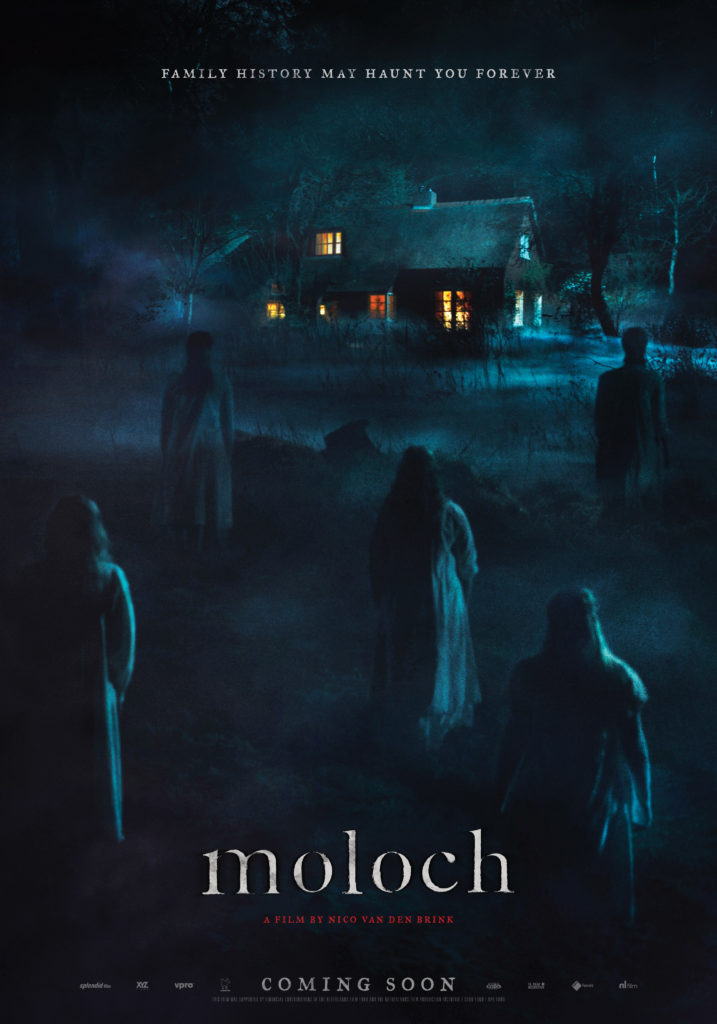
From Dutch literature to Dutch cinema, Nico Van Den Brink’s Moloch is a fun contribution to the folk horror genre. I’m a sucker for a moody bog with some midnight fog but what makes the film work are the ways in which the actors capture the real, everyday humanity of people—people with family, people who are doing fine but still kind of lonely, people as people—in the midst of a story haunted ghosts and sacrifice. If you’re into this sort of thing, it’s for you. If not, don’t worry about it.
5. Thyberg, Ninja. Pleasure (2021).
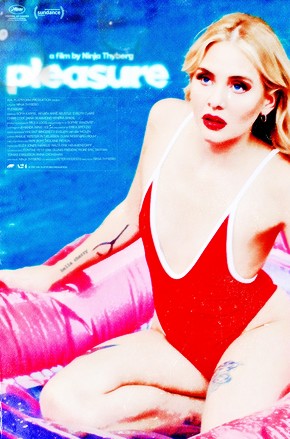
I watched Pleasure, Ninja Thyberg’s film about a young woman from Sweden trying to win at being a porn star in L.A. after watching Nina Menkes’s documentary about film, rape culture, and the male gaze (see review below). Perhaps, for this reason, I found Pleasure to be a technically fascinating film to watch. In almost every way it reverses, problematizes, and annihilates the male gaze as it offers an extraordinarily different reading of bodies, sex, and pleasure than that found in the male-dominated films Menkes deconstructs. Granted, there are several scenes that are nothing less than pornographic but, due to how these scenes are framed (and here I think Thyberg actually succeeds where Menkes fails—again, see review below), I suspect the experience for the viewer is not so much arousing as akin to what it feels like to be a teenager watching a movie with your parents and then a sex scene comes on.
Where this becomes more difficult to evaluate is when one thinks about Pleasure in relation to Thyberg’s prior commitment to “anti-porn activism” (and, it’s worth nothing, the whole “Nordic model” approach to sex work—a model that causes considerable harm to sex workers—originates from her homeland, Sweden). Sex work is work. Sometimes work, any work, is hard. We have good and bad days. Sometimes we choose to change professions. Sometimes we don’t. Sometimes we remember why we really love our job. Sometimes we don’t feel like we have a choice to change professions or not. Work, within neoliberalism’s current iteration of capitalism, is often exploitative. Workers of all kinds are over-worked, under-paid, exploited, and tossed aside. The figure the industry, the more likely this is to happen to the worker. And there is no bigger porn industry than the one that exists in L.A. But the L.A.-based porn industry is not representative of everyone’s experience in sex work (a point well made by Ovidie, a former porn star herself, in the documentary she created called Pornocracy [2017]). We need to remember this. Deconstructions of the male gaze, looking back—and Pleasure is an excellent example of “looking back” in the way that another feminist documntary filmmaker, Agnès Varda, describes (The first feminist gesture is to say: “Ok. They’re looking at me. But I’m looking at them.” The act of deciding to look, of deciding that the world is not defined by how people see me, but by how I see them.”)—are all well and good and necessary but such general acts of deconstructions related to patriarchy, misogyny, and consumerism, should not be confused with saying all that needs to be said about sex work qua sex work.
6. Mylod, Mark. The Menu (2022).

One of the great things about reality TV and competition shows is that they help ignite the desire for people to wage class war from below. Class war is always happening, as Warren Buffett reminded us just before neoliberal austerity really kicked into full gear (“There’s class war, alright, but it’s my class, the rich class, that’s making war, and we’re winning”). And so, as we follow ever-richer Real Housewives (in Beverly Hills, in New York, in Dubai) or get a glimpse into what life is like on a luxury yacht in the Mediterranean, or marvel at the culinary creations of a chef with three Michelin stars, or keep up with the Kardashians, or observe real estate agents in Los Angeles earning hundreds of thousands of dollars per sale (on homes that cost tens of millions of dollars), we slowly awaken to the realization that it’s the rich people who are the subjects of these shows, and not the poor people who watch them, who really put the “trash” in “trash TV.” This is what people do with all the money they inherit? Fuck them!
Fuck them is, indeed, high on Mark Mylod’s list of things to do with The Menu, a film which, itself, pays loving and humorous tribute to the foodie side of trash TV, Instagram, and blogging. In fact, it’s interesting that The Menu and Triangle of Sadness—both humerous films, both very well-acted and masterfully crafted, and both exposing the utter vapidity, insatiable greed, and self-absorbed vainglorious sense of superiority that the extremely wealth possess—should be considered two of the best films released in 2022. I like this turn of events—and I liked this film. For, as much as we all desire to be motivated by love (Che: “Let me say, at the risk of seeming ridiculous, that the true revolutionary is guided by great feelings of love”), we need to remember that Che also said, “a people without hatred cannot vanquish a brutal enemy.” Hasta la victoria siempre, Mark Mylod!
7. Johnstone, Gerard. M3GAN (2023).
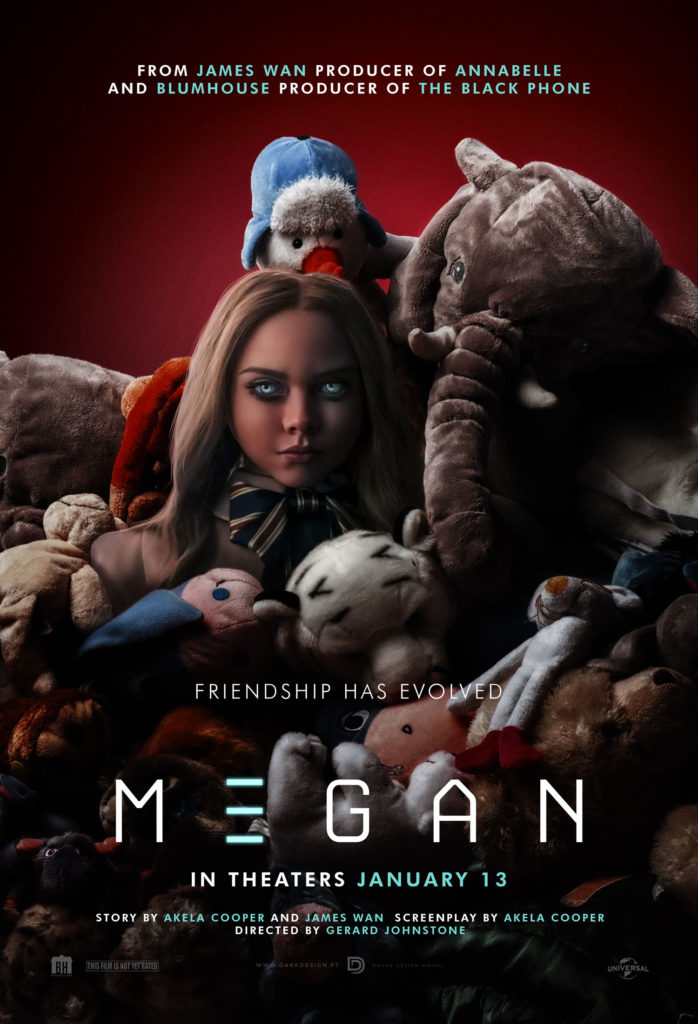
M3GAN is a mediocre film with an above-average marketing team. Its greatest strength is the quiet and sometimes genuinely humorous believability of its supporting cast (I LOLed when the mom at the alternative school explained that her son’s ADHD was a sign of his superior intelligence while that supposedly intelligent son was off in the woods bullying a little girl and beating on a doll), and its greatest weakness is that anyone familiar with the horror genre will feel like they’ve watched this movie a dozen times before. It’s not particularly scary. The leads aren’t particularly compelling. It’s Child’s Play for the 21st-century (titanium, after all, is harder to destroy than a 1980s doll)—somewhat more believable and somewhat duller. Ho-hum.
8. Wells, Charlotte. Aftersun (2022).
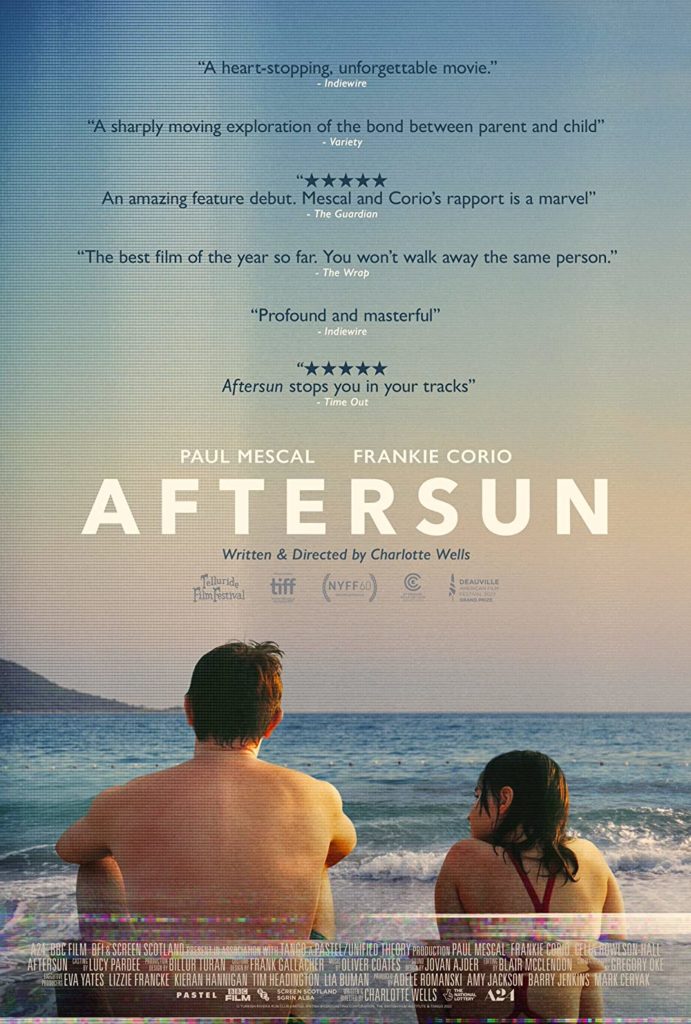
After the first thirty minutes, I thought I was going to finish Aftersun just to prove to myself that I could sit through a very well done, but extraordinarily slow moving film, even after my year of watching reality TV shows. I made it to the one hour mark and then fell asleep. A few nights later, I decided to go back and finish the film and, all of a sudden, I found myself suddenly feeling my grief welling up and bursting out of me. Much to my surprise, I wept. A quick burst of tears, a few gasping breaths, and then I was sitting tthere thinking, wow, look at what Charlotte Wells has done with this film. What seems like an arthouse film, almost deliberately and ostentatiously set on having nothing happen, is actually a remarkable meditation on grief and loss. But to get there, and through it, just like all grief and loss, you have to be willing to sit in stillness for awhile, to abide it, to immerse yourself into the utterly mundane day-to-dayness of the presence of your beloved so that you remember to feel once that is gone. This one sneaks up on you—as do almost all of our deep feelings—but it deserves all the times it was mentioned as one of the best films of 2022.
Documentaries
1. Gordon, Daniel. FIFA Uncovered (2022).

A four part docu-series, FIFA Uncovered demonstrates how corrupt organizations are corrupt. But corruption is so utterly rampant, ubiquitous, necessary, and taken-for-granted in the world of high finance—where transactions involving millions of dollars occur and the daily and don’t put dents into people’s accounts—that the FIFA Executives who are charged with crimes have trouble understanding or believing that they actually did anything morally wrong. It’s unfathomable to them that they have acted in a way that is any different than every single other person that they know. Thus, the find themselves convicted or ostracized even though they continue to sleep with untroubled consciences. The financial elite, all rhetoric aside, really do experience themselves as Übermensch navigating the pathway beyond good and evil. And, when you think about it, are not all the virtues that the rich try to impose on the poor (thrift, self-discipline, hard work, integrity) actually all the virtues that rich believe do not apply to them? The irony, of course, is that the poor are, of necessity, thrifty, self-disciplined, hard working, and unable to participate in the monumental acts of corruption and theft that are the bread-and-butter of wealth.
2. Menkes, Nina. Brainwashed: Sex-Camera-Power (2022).

I don’t imagine anyone would be shocked by the assertion that Hollywood is dominated by the male gaze, and that it systematically objectifies and consumes cis-gendered women, regardless of what those women desire and, it should be noted, even when those women are presented as powerful. As Menkes notes, 94% of all women working in Hollywood (from actors to screenwriters to set designers) have been sexually harassed or assaulted and there’s a running joke (yes, people in the industry treat it like a joke) that if all the abusive men were toppled in a #metoo moment, then Hollywood would have to start again from scratch. All this is fairly obvious but what Menkes sets out to do in this documentary, is to explore the more subtle, structural, and enframing ways movies—including a slew of Oscar or Palme D’Or winners—deploy the male gaze. This is done with everything from lighting, camera angles, perspectives, and so on. This element was interesting but, in my opinion, not explored in enough detail to really set this documentary apart from other standard intros to feminism and film. In fact, Menkes spends so much time showing her viewers the scenes where the male gaze is in full force in it’s most obvious ways—a shot of breasts, a shot of a bare ass, a shot of a woman’s pubic hair, a shot of a group of women naked in a change room, full frontal this, full frontal that, naked, sexualized, objectified women who want it, who don’t want it but then change their mind, who learn to want it, whatever, that I couldn’t help but wonder what was going on. Especially because Menkes herself observes that Hollywood films that try to be critical of the male gaze usually end up with scenes that reproduce women as sexual objects. Hence all the critical comments about the master’s tools not dismantling the master’s house (or, as I have often said in the past about representations of rape in cinema—e.g. Gaspar Noé’s Irreversible—the medium doesn’t fit the message). Of course, I know, the mythos of the critic is constructed to suggest that those of us who engage in such critical viewings are beyond watching such scenes in the wrong way, but Menkes’s whole point is that such scenes are, in and of themselves, regardless of what the viewer says, wrong. A curious product, this documentary. The analysis wasn’t a deep as I hoped it would be and the subject matter, well, it felt somewhat exploitative.
3. Denison, Ramsey. What Happened in Vegas (2017).

I thought this documentary was going to be about how the Las Vegas Metropolitan Police Department withheld information from the public in order to protect the Mandalay Bay Casino (where the shooter was a regular high-roller), and how the LVMPD was also caught lying to the public for the same reason with the information that they did share. And Ramsey does touch on this. But for about ten minutes. The rest of the time, he looks into general LVMPD corruption and incidences when officers shot and killed unarmed civilians and got away with it. Standard American policing stuff. Welcome to EveryCity, USA and, yeah, if you’re not saying “fuck the police” by now, there’s something wrong with you.
4. Renzi, Andrew. Pepsi, Where’s My Jet? (2022).
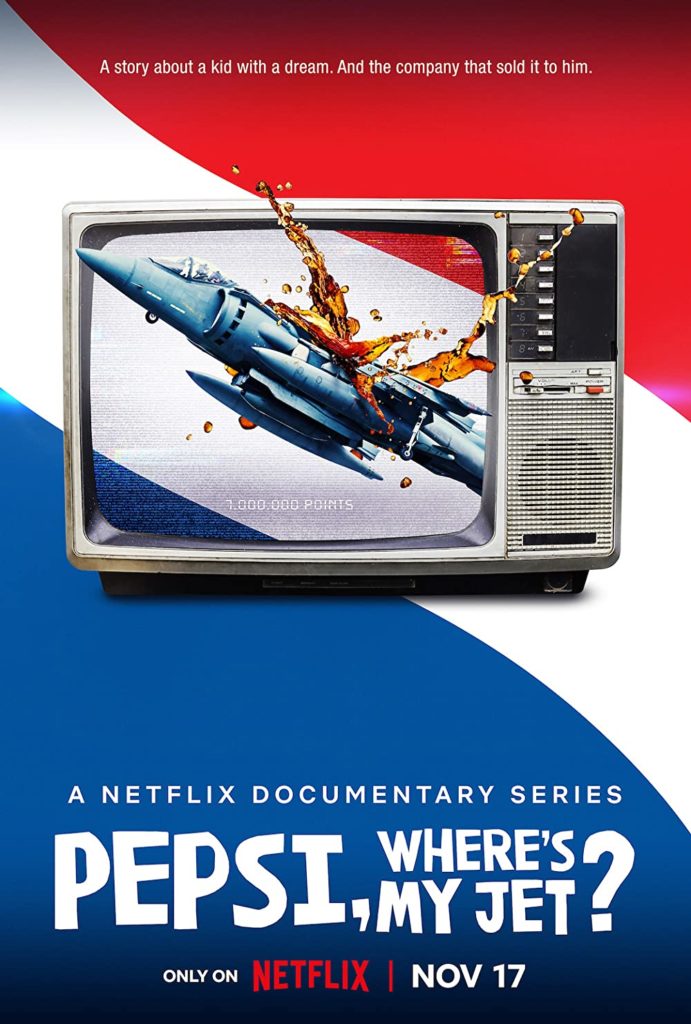
The real mind-blowing wtf moment in this otherwise lighthearted and fun story about a rich White boy who tried to get Pepsi to give him a warplane, comes in the fourth episode. In that episode it’s revealed that Pepsi fucked up a contest in the Philippines in the ‘90s and refused to pay out the winners. Then, when the public turned against Pepsi, Pepsi engaged in some false flag terrorist operations, blew up one of its delivery vans, killing an innocent passerby, and bombed its own plant, killing three workers. Sympathy then shifted towards Pepsi and they were able to recover from their corporate-greed-created crisis (until it was learned that Pepsi actually orchestrated the bombings itself in order to accomplish this shift in public sympathies). What. The. Fuck. That story deserves four episodes but, yeah, it probably isn’t the feel good story that this feel-good romp through White and privileged Americana that could have been orchestrated by Mark Twain or Kurt Vonnegut.